Entries Tagged as 'Industry'
If you want an idea of how key to Baltimore the Francis Scott Key Bridge is, here are some photos to remind you:
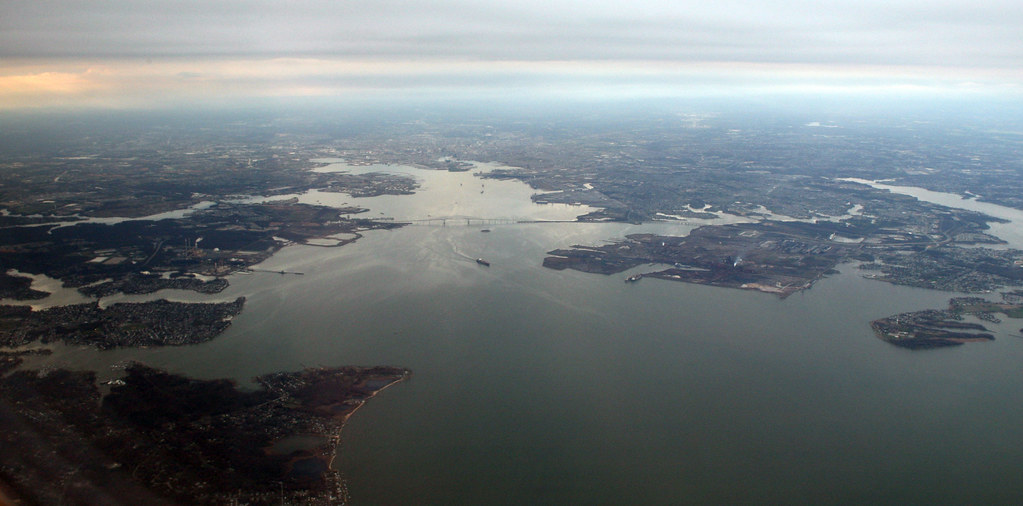
Baltimore Harbor. Note the Francis Scott Key Bridge, above the middle.
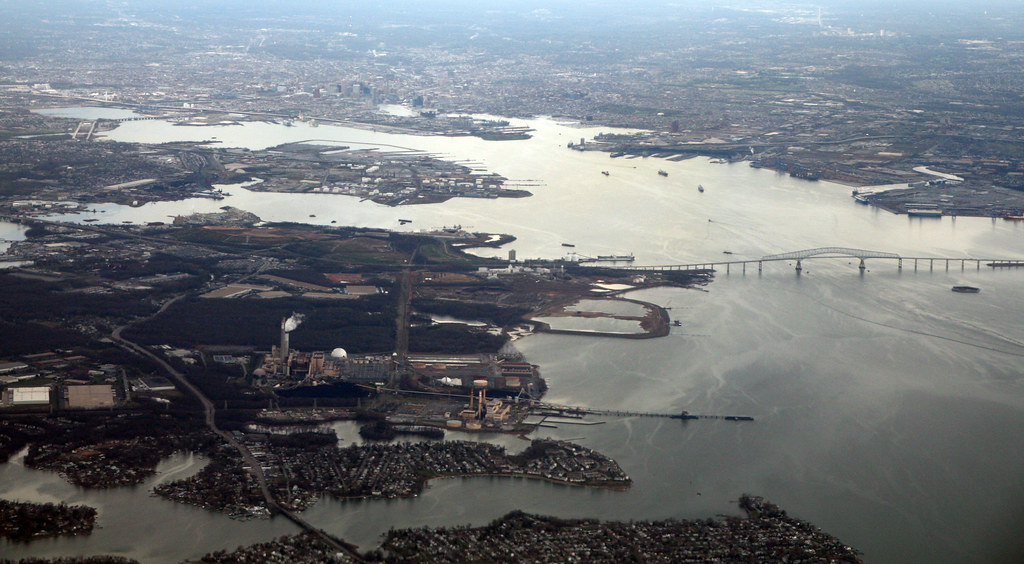
On the right is the Francis Scott Key Bridge, also known in its time as the Car Strangled Spanner. It was dropped by the MV Dali container ship. Note that these ships all load and unload on the far side of the bridge at many docking sites. All need to thread the eye of the bridge’s needle.
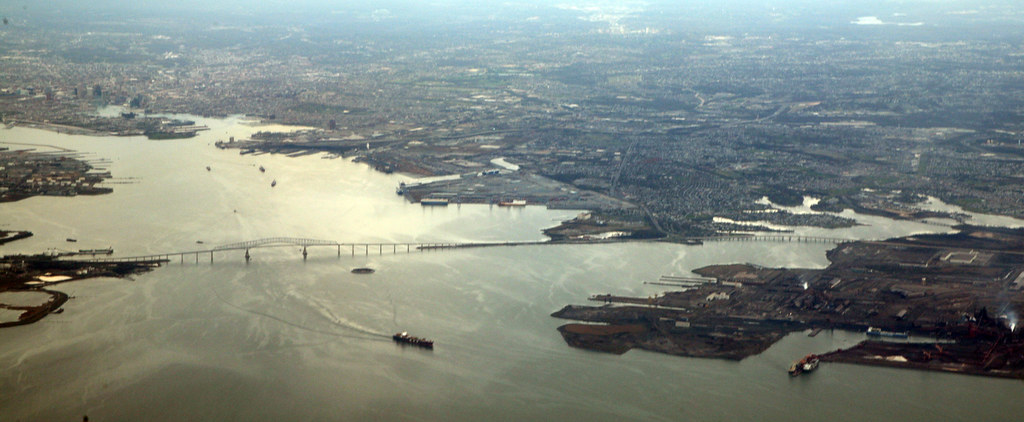
This view shows the whole span of the bridge, from the north side to the south, across the mouth of the harbor.
Those three are among six I’ve posted on Flickr for the sole purpose of making them useful. Such as now, twelve years after I shot them. Because yesterday an errant cargo ship, the MV Dali, brought the bridge down by taking out the southwest support column (left side in this view) for the central span, killing at least six people and leaving the “Car Strangled Spanner” out of commission for the next few years.
Like all my other public photos, these are Creative Commons licensed to require only attribution. I see this as the infrastructure of public photography supporting the infrastructures of journalism and archivy.*
Photographically, they aren’t great. But they are free, so if you’re writing about the bridge and want an easy photo to use, have at ’em.
*Meaning (if you skip that link) “the discipline of archives.” For the practice of creating and maintaining archives, I prefer archivery, and would have used it here if a search for that word hadn’t suggested archivy instead.
Tags: Building · Emergency · Geography · Industry · Media · Photography · Roads/Bridges · Travel · Water
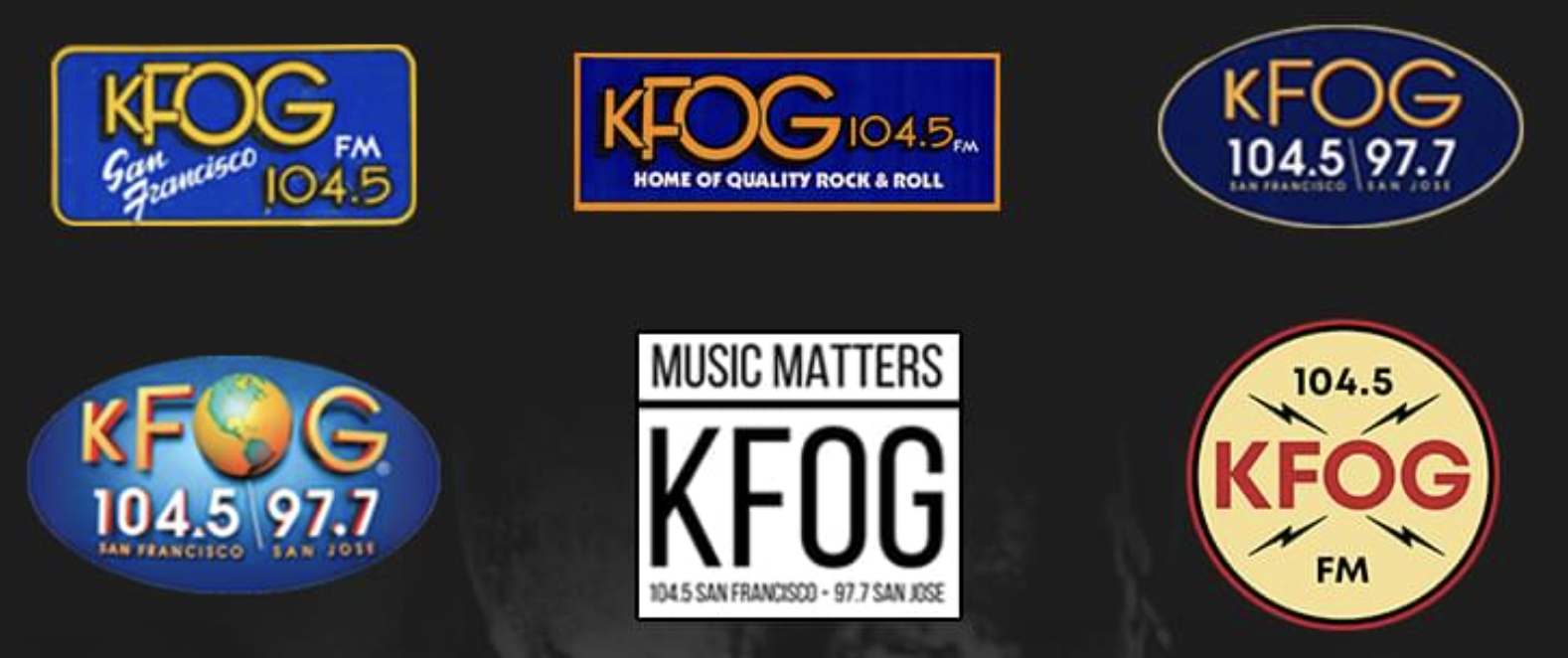
When I moved to Palo Alto from North Carolina in 1985, the preëminent rock station for the Bay Area was KFOG, on 104.5 FM. The morning jock was M. Dung (the on-air handle of Michael Slavko), who did more than anyone else to make me feel comfortable and welcome in a completely new environment. Like the rest of the station, M (what he usually called himself) was “always on, but a little off.”
My fave rock station in North Carolina had been WRDU/106.1, to which many friends who had worked at WQDR/94.7 had just migrated after that much-loved station flipped to country music. (A genre I also like, but we’re talking about friends here.)
From 1982 to 2017, KFOG was a great friend to fans of rock and related genres. You can see how much it was loved just by searching for it. The top results are tribute sites KFOG.com and KFOGisForever. Below those are a list of heartfelt lamentations.
I’ll carry this forward with my answer to a Quora question: Will 104.5 FM in San Francisco ever flip back to any music format?
In American radio, very few station formats are permanent. Two of the most durable are all-news and all-sports. For decades, the biggest all-news and all-sports stations in major markets were only on AM signals. Nearly all of those stations in recent years have added FM signals, displacing whatever was on the FM channel they moved to. All-news WINS/1010 in New York, WBBM/780 in Chicago, and KNX/1070 in Los Angeles moved to 92.3, 105.9, and 97.1 respectively, replacing the music stations on those channels. All-sports WEEI/850 in Boston and WFAN/660 in New York did the same when they moved to 93.7 and 101.9 in those cities. And KNBR/680 did the same in San Francisco when it added the signal at 104.5, long the home of KFOG.
Never mind that KNBR’s day signal covers a third of California and its night signal covers the whole Western U.S., while KFOG’s old signal barely covers the Bay Area. AM is a dead band walking. FM is where the listening is, and the signal at 104.5 is at least competitive. By now there are very few incumbent ratings leaders on AM that have not added an FM signal. KFI/640 in Los Angeles, WLW/700 in Cincinnati, KOA/850 in Denver, and WSCR/670 in Chicago are four that come to mind. There are a handful of others. Even with those, I’m sure it’s a matter of time before their owners find an FM signal to add.
In the longer term, FM is doomed as well. The Internet is slowly eating away at every incumbent communications medium: print, radio, TV, all of it. Your best radio is now the phone in your pocket or purse. All stations of any importance are there as well as on old-fashioned broadcast bands. If you want to hear KFOG again, there are a number of websites streaming the old programs. Nearly every piece of recorded music ever played on KFOG is also on music services from Apple, Amazon, Spotify, and other sources.
Here is another reason why KFOG is unlikely to return to the airwaves: rock music is still with us, but its era is over. We could argue that, but look up Rock Era and see what comes up. KFOG played a lot of genres other than pure rock (one of the things that made the station distinctive), but it was still a rock station.
Music genres today are largely created and maintained online, rather than on the air.
But hey, maybe the old KFOG will return someday.
But, if it does, it will need to pry the callsign from its current holder: KFOG/1250 in Little Rock, Arkansas. Might be a long shot, but money talks. If there is an economic case, it’s one worth making. And, for what it’s worth, the station mostly identifies as “Power 92” (named for its FM signal), and I read in June that the AM side was off the air.
In respect to infrastructure (the theme of this blog), my point is this: As we move into the Digital Age, the Internet and digital tech will finish absorbing and obsolescing every old analog communication system.
Radio’s age lasted roughly from the early twenties of the twentieth century to the early twenties of the twenty-first. Some of what it was will live on through streams and podcasts online. But it’s a matter of time before radios will only play hiss.
Tags: Broadcasting · Future · History · Industry · Over-the-Air (OTA) · Radio

Mountains are temporary. All are in the queue for demolition, eventually. So is the whole planet. I explain that in The Universe is a Startup.
Blogs are more like beach sand. Or a whiteboard. So is the whole Web. In the old days we thought it was a library. Now we know it’s not. (Though the Internet Archive truly is, and that’s why we love it.)
On Saturday this blog and the one behind that first link—my personal one, which I’ve had at blogs.harvard.edu since 2007, will be gone from that domain. So will ProjectVRM, which I started at the Berkman Klein Center in 2006, and remains very active.
The challenge now is to migrate them to new domains.
Those qualify as infrastructure too. While they last.
Tags: Geography · History · Industry
September 24th, 2022 · No Comments

MEGO in journalism stands for My Eyes (or Ears) Glaze Over. According to William Safire , a MEGO os “a subject of great importance which resists reader interest.”
Infrastructure is a one-word MEGO.
So I haven’t written much about infrastructure, including here: on a blog created by Christain Sandvig when we were both fellows at the Berkman Klein Center. It was meant as a place where learned folk who care about infrastructure could hold forth. A variety of those was recruited to participate, and approximately none did, including me. I’ve kept it alive in recent years by posting here occasionally, mostly with stuff that I think fits better here than anywhere else I tend to write.
In the meantime, I have kept an active site on the topic going: a Flickr account with the name Infrastructure. My chief interest there is in showing the plasticity of infrastructure over time: how it changes or gets replaced. I am especially interested in forms of infrastructure that are out of sight, mind, or booth, but on which we depend completely. These include water, gas, electricity, waste treatment… all the usual.
Plus broadcasting. Because that’s the form of infrastructure I know best, care about most, and see disappearing. Nobody else seems to be on this beat, so I’m stepping up.
“Compulsions are easy to come by and hard to explain,” John McPhee explains in a New Yorker essay that visits his compulsion to collect stray golf balls. I am likewise compelled to take pictures of transmitter sites. I came by my interest in transmitters when I was a kid growing up in New Jersey, observing the Manhattan Skyline from across swamps populated by dozens of transmitting towers for New York’s AM radio stations. I loved radio and was so curious about the sources of signals that I would ride my bike down Route 17 (dangerous and dumb, but I survived) to WABC in Lodi, WINS in Lyndhurst, and WADO, WBNX, and WHN on Patterson Plank Road in Rutherford and Carlstadt. There I would gawk at the towers and sometimes knock on doors of the buildings feeding signals to the towers, so I could talk shop with the engineers who answered. The compulsion stayed with me. So, after I could drive, I visited countless other facilities, including mountaintop FM and TV stations.
But I didn’t begin shooting lots of photos of broadcast transmitters until digital photography became easy, along with publishing details about them. (One of the most active groups on Facebook is titled, no kidding, “I take pictures of transmitter sites.” It has over fifteen thousand members, most of which, I gather, are active or retired engineers like the ones I would visit as a kid.)
In the last few years, I’ve also come to realize that I’m documenting a medium in decline. Radio is being eaten on the music side by streaming (Apple, Amazon, Spotify, Pandora) and on the talk side by podcasting. Broadcast TV moved almost entirely from antennas to cable decades ago, and now cable itself is being replaced by subscription (aka “prestige”) video services. TV stations maintain transmitters mostly to satisfy “must carry” rules for cable. (Your station can’t be on cable if it’s not on the air.) So now my transmitter site photography has a documentary purpose: keeping up with what’s going down.
The example at the top of this post tells the story of one tower transmitting three of Santa Barbara’s AM stations: what broadcast engineers call a triplex on a monopole. Here’s what the tower looked like for most of its life, when it was 198 feet tall and proclaiming itself a landmark with bright red and white paint. And here’s what it looks like since December of last year, at just 128 feet tall, painted dark green to camouflage it among surrounding palm and eucalyptus trees. The tower now makes up for its lack of height with a flat 24-foot-wide X mounted on top like the candy on a lollypop. The tower was shortened because it was slightly bent. Twenty years ago, the tower would have been replaced or straightened.
Since the tower is now less efficient, the stations have adjusted their powers, mostly upward. Listeners, I am sure, can tell no difference. Nor did they notice when WBBM/780, Chicago’s alpha news station, dropped from its legacy status, running 50,000 watts full time, to 35,000 watts in the daytime and 44,000 watts at night. they did that so the station’s owner could sell off the land under the station’s transmitter sits. WBBM is now diplexed onto the tower of sister station WSCR/670.
The Santa Barbara stations are lucky that their tower stands a city equipment yard, consuming only a few square feet of space on the ground that’s not for sale. Countless other AM stations across the country have been going dark or operating with cheaper facilities. They do this because AM listening is declining while the value of land under many transmitter sites exceeds the worth of the signals. In the Santa Barbara case, the tower stands in the city equipment yard, taking up almost no room on the ground, and the shorter tower works almost as well as it did at full height. And, because it’s an example of AM’s growing unimportance, I keep shooting pictures of stations like these.
Among the reduced or deceased signals:
- WMEX/1510’s 50,000-watt facility
- WFNI’s 50,000-watt six-tower site in Indianapolis. (That link is to a 2019 Google Streetview of the site. Note the For Sale sign. It’s sold now, the station is off the air, and the land covered with buildings. It was, for most of its life, and at the time of its demise, the biggest AM station in Indiana. When I lived in North Carolina, it was one of the biggest signals one could get at night.)
- KABC/790’s and KHJ/930”s legacy transmitting sites in Los Angeles
- KOKC/1520’s original full-size towers (lost in a tornado and replaced with cheaper ones half as high and much less efficient)
- WDNC/620 in Durham and WKIX/850 in Raleigh, North Carolina, with land sold from under their old towers
Those are harbingers toward a time when AM is gone completely, as it already is in much of Europe. FM and TV are not far behind. But streams will remain, as the most popular radio already is the smartphone.
And I want to document as much of the change as I can.
By the way, I am also firing up this blog because it is also starting to show up in some RSS feeds. Greetings, feedsters!
Important: RSS is a hugely important source of Internet infrastructure. Dig:

Nothing with that many results can’t matter.
Tags: Future · History · Industry · Media · Radio · Television
This is my response on Quora to the question How are podcasts and talk radio different?
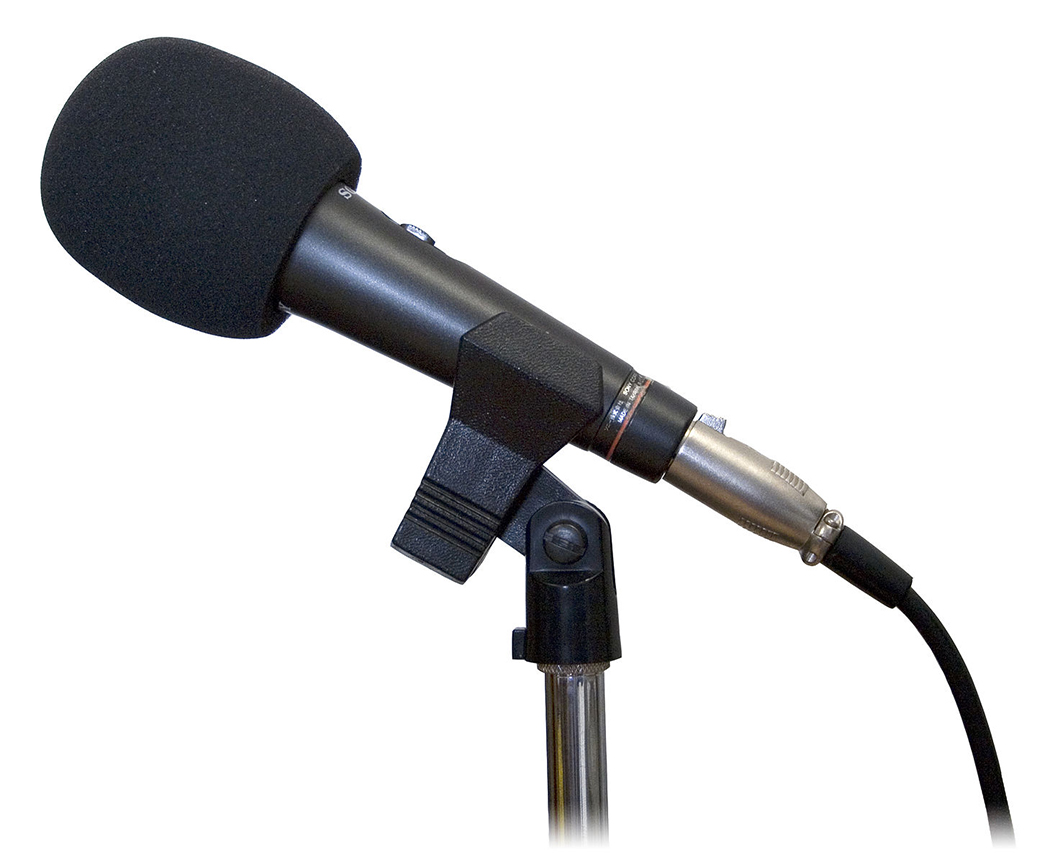 First, radio is broadcasting over the air (and also increasingly, also over the Internet, where it is called streaming or webcasting), while podcasts are recorded files distributed over the Internet through RSS (Really Simple Syndication). Podcasts can be played at the listener’s convenience on any app or device that supports it, of which there are many, including the phones in nearly everyone’s pocket or purse. It is also important to note that podcasting can be done by anyone anywhere (even from one of those phones) and does not require a license or a station, so the number of producers is limitless.
First, radio is broadcasting over the air (and also increasingly, also over the Internet, where it is called streaming or webcasting), while podcasts are recorded files distributed over the Internet through RSS (Really Simple Syndication). Podcasts can be played at the listener’s convenience on any app or device that supports it, of which there are many, including the phones in nearly everyone’s pocket or purse. It is also important to note that podcasting can be done by anyone anywhere (even from one of those phones) and does not require a license or a station, so the number of producers is limitless.
Second, since podcasters from the start have not enjoyed any kind of broad music licensing agreement with producers of recordings, podcasting has been almost all talk. (See, a podcaster needs to “clear rights” for every piece of music played. Live streamers such as Spotify, Apple and Amazon already have their rights cleared broadly through licensing systems.)
This is why podcasting and streaming are body-snatching radio from two sides: podcasting is becoming talk radio, while streaming is becoming music radio.
At the end of this trend, most radio listening will not be on radios, but on phones and other computing devices connected to the Internet. If the trend goes all the way, over-the-air radio will cease. This is already happening to AM radio (called MW outside North America), and may eventually happen to FM as well. Meanwhile, expect talk and music listening on the Internet to continue growing, through streaming and podcasting.
Tags: Industry · Media · Radio
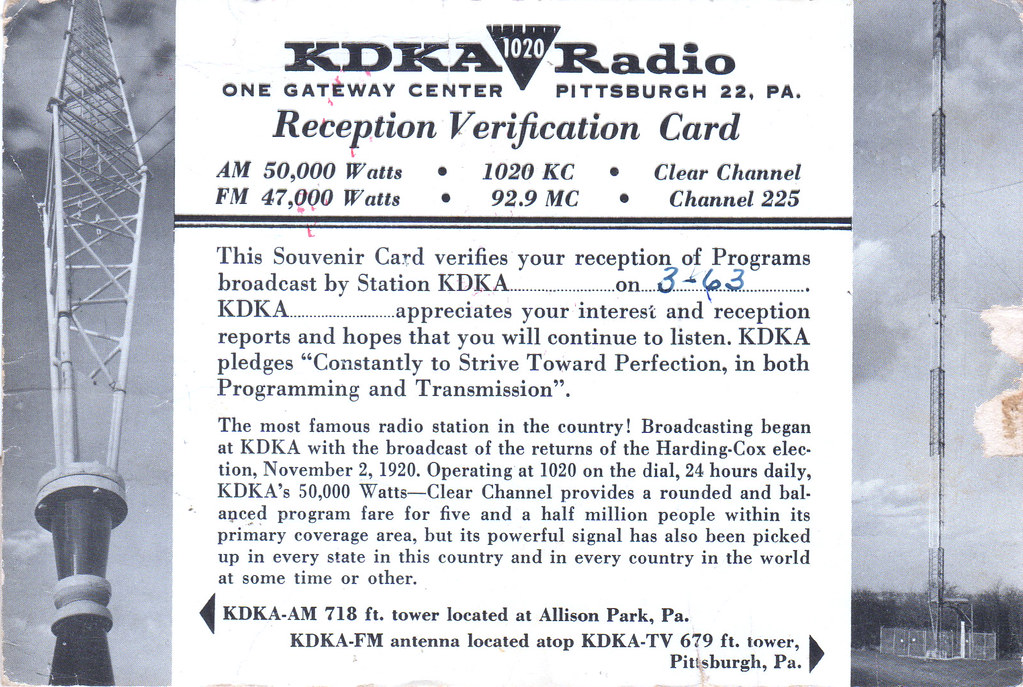
On the I Love AM Radio Facebook group, somebody asked if the branding of legacy AM stations, including giants WFAN/660 in New York and KDKA/1020 in Pittsburgh, would move entirely their FM side (101.9 and 100.1 respectively). I replied,
Eventually, the branding drops for both FM and AM. There will just be legacy callsigns, channels or nicknames, attached to streams on the Net.
As a native New York area sports fan, I enjoy listening to WFAN on 660 AM in the daytime from Cape Cod to Cape May and at night from Maine to the Carolinas—and in Indiana, where I’m living right now. The FM on 101.9 is good for the metro, but gone halfway across New Jersey or out Long Island.
While that may argue for keeping the AM signal alive and branded, another fact is that I can also get the station on my phone, and also in the dashboard of my car. Coverage may only be where there is cellular data; but that’s across most of the developed world. It also sounds better in streamed digital form.
Not that “tuning” into a stream is easy. WFAN has no app of its own. Nor does KDKA, which I’m listening to right now on the live stream on its website, which is a subdomain of the Audacy site. WFAN is similarly subordinated to the same corporate parent.
Both avoid mentioning their AM and FM channels. In the last fifteen minutes, its channels have not been mentioned by KDKA. On WFAN you hear the channels more (or at least 101.9, because they are still somewhat new to that channel and want to promote it).
KDKA’s traffic reporter just said, “on 100.1 FM and AM 1020, KDKA.” I thought that might be the official top-of-the-hour ID, but then the real thing came: a rapidly-spoken recording that said “KDKA AM and HD FM HD2 Pittsburgh. An Audacy station.” Let me unpack that:
• KDKA-AM still exists and may have HD. (Does it?)
• The same stream on FM is itself HD on W261AX/100.1, a 99-watt translator of KDKA-AM, which is also on the HD2 of KDKA-FM on 93.7.
All the big owners—Audacy (Formerly Radio.com, Entercom and CBS Radio), iHeart Radio (formerly Clear Channel), and Cumulus—know that radios have been replaced by phones in pockets and entertainment systems in dashboards and homes. The wireless that matters is digital and cellular, in the sense that home and car wi-fi are now effectively cellular as well. What will survive are branded forms of “content.” Some will be live shows, some will be podcasts, some will be streams of what were once stations and are now apps or streams within apps. AM and FM will eventually be gone. Until then they will survive as legacy expenses, necessary only as long as the FCC continues to require them.
Much as I love AM radio (or I wouldn’t be here), it is a dead band walking. Even for giants like WFAN and KDKA.
Tags: Industry · Media · Radio

I’m reviving this blog to see what happens.
If readers are interested I’ll see if any of the other writers (including the readers who write in) are interested in re-joining. Or, if we want to move it elsewhere. Or something. Not sure. Ideas welcome. If you have some, write me at my first name at my last name dot come. Thanks!
Tags: History · Industry
 In Reason Paul Detrick asks if Facebook a public utility and gets an answer of “yes” from filmmaker Cullen Hoback. “At this point I would say that Facebook is basically a public utility,” he says. “You’ve got over a billion people using this service. That’s not a choice for many people. Certainly not for a lot of teenagers. It’s kind of social suicide to not be a part of that.”
In Reason Paul Detrick asks if Facebook a public utility and gets an answer of “yes” from filmmaker Cullen Hoback. “At this point I would say that Facebook is basically a public utility,” he says. “You’ve got over a billion people using this service. That’s not a choice for many people. Certainly not for a lot of teenagers. It’s kind of social suicide to not be a part of that.”
Release of Cullen’s new documentary Terms and Conditions May Apply is the occasion for the interview with Paul. I saw the movie recently here in New York and highly recommend it. I also agree with Cullen that Facebook’s popularity is utility-grade in its popularity.
While facebook has utility for many people, does that fact make it a public utility?
What makes a utility public — in the technical, administrative and legal senses of that word — are local, state and federal agencies with professionals in position to know what’s going on inside the providers of necessary services that sustain civilization.
At the state level in the U.S., utilities are overseen by PUCs — public utility commissions. As the graphic above (from the Pennsylvania PUC) shows, there are basically five kinds of public utilities recognized today by PUCs: transportation, electricity, natural gas, telecommunications and water/wastewater. (Wikipedia’s list of utilities also includes steam, which is usually a byproduct of electric power production. It also covers many nations other than the U.S.) So, by that definition, Facebook isn’t a public utility, even in the telecom sense, because it isn’t a phone or cable company.
But it is important to also note that PUCs’ comprehension of the industries they regulate often drags behind the times. We see that with the dated cell phone image above, and in the Wisconsin PUC’s image of a touch-tone landline phone. Still, there are at PUCs people that at least they know something about what’s happening inside the utilities they oversee. The problem with giant Web services — especially Google and Facebook — from a PUC perspective, is that nobody outside those companies knows what’s happening, exactly, inside them.
Perhaps with the specter of future PUC oversight in the future, Google has recently been forthcoming about its vast data centers, inviting visitors to “see where the Internet lives”. (An overstatement, but less extreme than it ought to be.) Like many big companies in need of PR coverage, they brag about their public-minded compliance with the letters and spirits of regulatory interests. Thus they brag,
Environmental, health, and safety
Certifying our high standards:
Google is the first major internet services company to gain external certification of our high environmental and workplace safety standards throughout our US and European data centers. More specifically, all of our US and European data centers have received voluntary ISO 14001 and OHSAS 18001 certifications. Additionally, we’re the first company in the United States to obtain multi-site ISO 50001 Energy Management System certification, covering 6 US data centers.
Our environmental, health, and safety policy:
Google owned and operated data centers will lead the industry in environmental protection, pollution prevention, health, and safety. We will take a proactive approach in our activities and aim to continually improve data center environmental, health, and safety (EHS) performance. We will comply with applicable EHS legal requirements, and as appropriate for other EHS matters, we will implement voluntary standards or best management practices.
Yet the infrastructural graces Google provides (e.g. search, mapping, traffic) are not visible in those policies or photos of data center racks and plumbing. For what these things actually do, those data centers are boxes no less black than the NSA’s.
So now let’s say we actually do want Facebook and Google regulated to the same degrees as, say, transportation, power and water companies. We would expect government experts to make sure these companies are serving the public well, right? Especially, say, around issues the public cares about, such as personal privacy, which has been a big issue lately — and the bulls-eye of Cullen’s documentaries. (His next is Track Off Us.)
But we don’t have that. Not even close. Instead we have governments enlisting the help of these companies (and ones in telecom) for spying on citizens. It’s an unpleasant irony.
There are no easy solutions here; just an urgency toward reversing twin trends toward opacity and impunity by the Googles and Facebooks of the world, and by the government bodies taking advantage of them.
[Later…] Find some additional conversation with @CullenHoback here on twitter.
Tags: Industry
I first heard “sustainable consumption” when John Wilbanks uttered it yesterday. At first I thought he was joking about his work around large international well-meaning entities such as the World Economic Forum. By that I mean, large economies with large industries wishing to keep consumption by served populations up to economy-sustaining levels. It was later that I looked it up and found at Wikipedia that a definition dates back to the Oslo Symposium on Sustainable Consumption, which called it,
the use of services and related products which respond to basic needs and bring a better quality of life while minimising the use of natural resources and toxic materials as well as emissions of waste and pollutants over the life cycle of the service or product so as not to jeopardise the needs of future generations.”
So my assumed definition was at odds with the Oslo one, and others raised since. I therefore sit corrected, but wish to retain the ironies around the topic.
And, since nobody had blogged anything here in a long time and I’d like to fire the blog up again, I thought I’d flag the whole topic, since in the long run it is bound to bear on infrastructure.
Not speaking of which, a service called Zemanta, which works as a plug-in with WordPress, suggests these as related bonus links:
Tags: Industry · Sustainability
For anybody interested in the history of infrastructure, and lessons to be learned from many points in the history of the Industrial Age, Andrew Odlyzko, of the University of Minnesota, is required reading.
Here is a reading list.
Note the pieces on railway mania. Highly relevant stuff.
I’m writing this right now while leveraging one of the older forms of Industrial Age transport: canals. We are currently on one in Lorraine, France. Built in the early 1800s, it remains in use occasionally for barges, but is better known now for leisure boating. That’s what we’re doing here. It’s a small but thriving industry.
Tags: History · Industry








 First, radio is broadcasting over the air (and also increasingly, also over the Internet, where it is called streaming or webcasting), while podcasts are recorded files distributed over the Internet through
First, radio is broadcasting over the air (and also increasingly, also over the Internet, where it is called streaming or webcasting), while podcasts are recorded files distributed over the Internet through 

 In
In